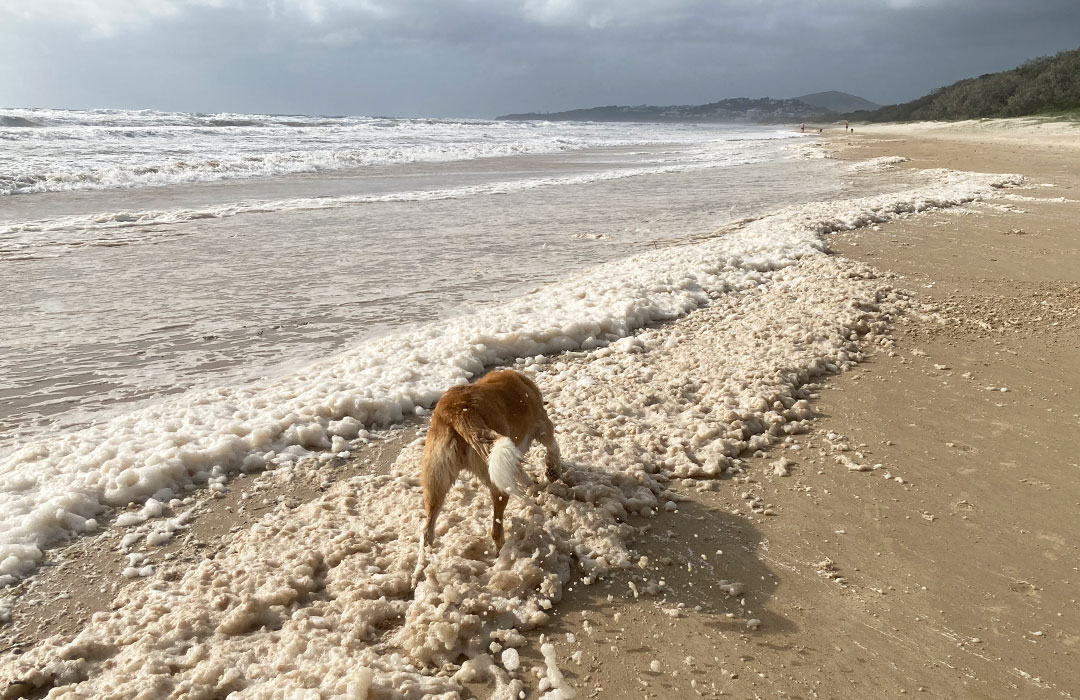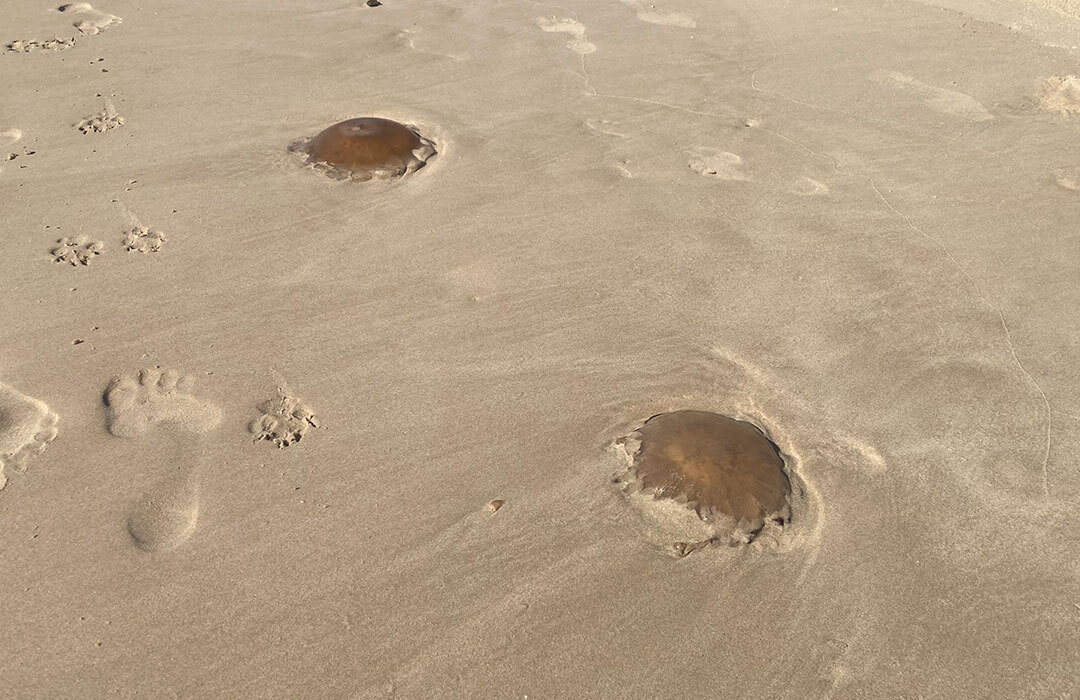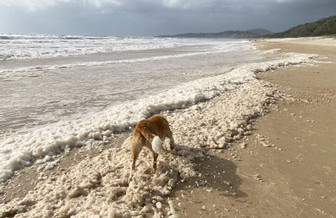How To Protect Your Dog From Blue Bottles And Marine Stingers
Posted by Wolf & I Co. on Feb 18, 2025
Large swells and strong winds tend to bring a range of floating jelly fish and marine stingers to our shores, they can also appear on our dog beaches when the notorious north-easterly winds blow in.
Blue bottles, also known as Portuguese Man O' War, are beautiful yet dangerous marine creatures often found washed up on beaches. While they might look harmless with their striking blue and purple colours, they pose serious risks to dogs that come into contact with them.
These creatures are not a single animal, but a colonial organism made up of four different polyps, one of which has tentacles that can extend up to 30 meters. The tentacles contain venom that is capable of stinging and causing pain.
They typically wash up on beaches in masses during summer. If you spot a blue button jellyfish or the common blue bottle jellyfish and your dog is prone to sniffing, licking and or eating sea creatures along the water line you may want to keep them on their dog leash to keep a close eye on them.
The reason for concern is for dogs that ingest bluebottles may be stung in the mouth and throat. Dogs with thick coats don’t tend to be affected as much by the blue bottle tentacles, however dogs with more exposed skin should take care.
Sea foam is also usually created during high winds and this can conceal stingers and other debris, so keep your dogs out of the foam just in case.

If you haven’t seen a blue bottle or stinger before, they are blue, small and flat, about the size of a ten cent coin. The blue button jellyfish can cause stings, and discomfort to your dog if they have a little nibble on them.
These marine stingers can be painful and if you’re not aware of the symptoms, you can expect to see some extra drooling and pain, potentially vomit. Stings can also result in local swelling in the mouth and throat and in rare cases, this can lead to your dog having breathing difficulties.
When hitting the dog beach for your morning dog walk, spend a few minutes inspecting the tide line, as that’s usually where they are found particularly in the days following strong onshore winds. Once you’ve had a good look on the sand you can go about removing your dogs leash or dog harness and leash.
If there are washed up bluebottles and if your dog is prone to licking and or eating anything, keeping your dog leashed is a good idea and this can also be a useful strategy to prevent your dog eating beached pufferfish and other jellyfish.

If your dog has eaten or chewed on a bluebottle, try to remove the stinger but make sure you use something to protect your own hands like a towel or shirt, then get them to the vet asap.
If you don’t know what to do, just get in touch with your local or closest vet for assistance.
If you are concerned, put your dog on a leash and keep an eye on their fun filled beach sniffari. Or just keep your dog and leash close by in case you need to put your dog on a leash quickly.
So the next time you see a blue bottle at the dog beach you will know exactly what to do and will be armed with useful knowledge on how to manage these situations.
Follow us on Instagram and subscribe for more dog friendly information sent direct to your inbox!

